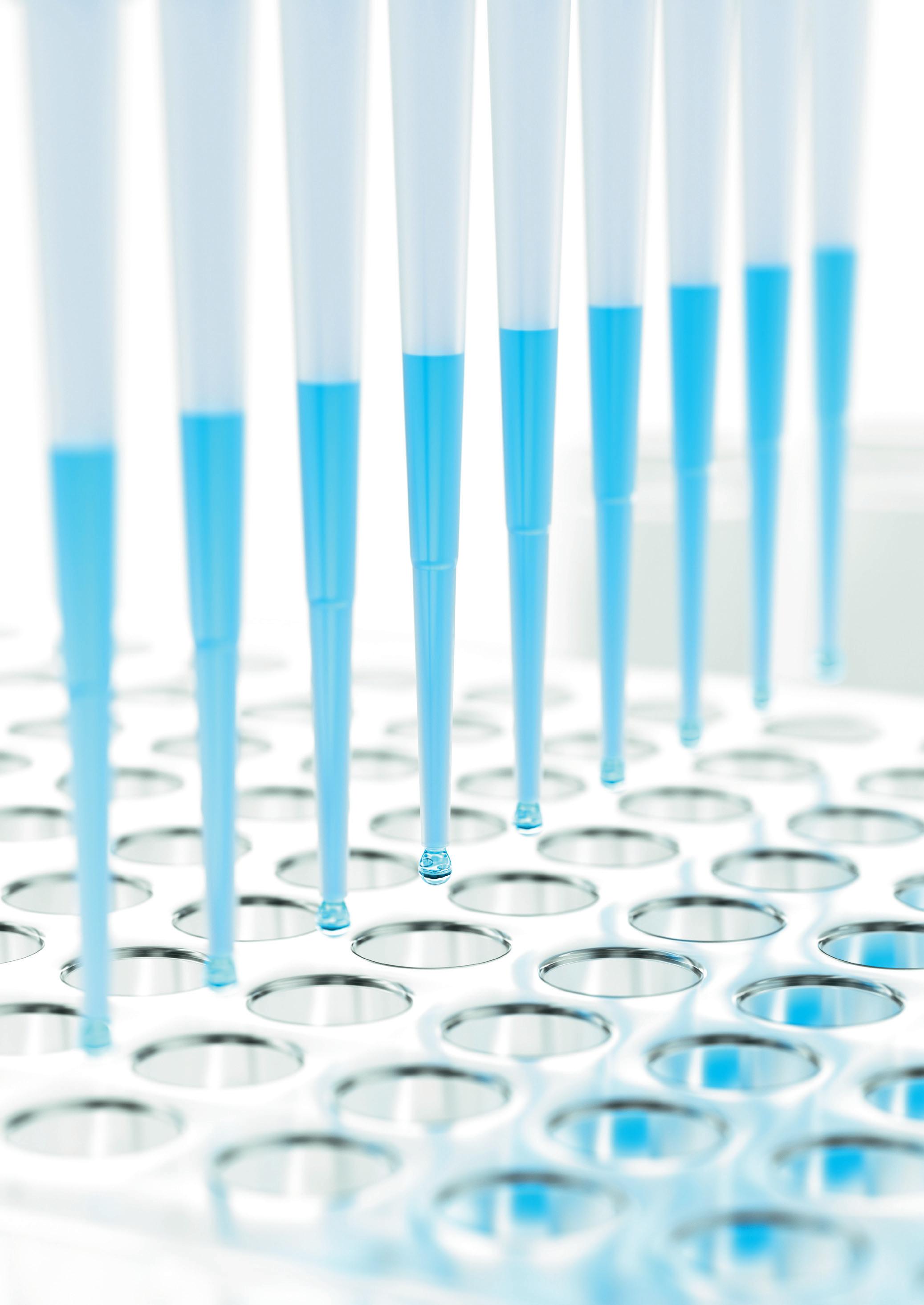
4 minute read
LIQUID HANDLING 4.0
What to consider when selecting OEM robotic components Liquid Handling 4.0
Lab automation and liquid handling solutions are evolving rapidly, shaped by many of the same forces and disruptive technologies that define the Fourth Industrial Revolution. Alongside Industry 4.0, you could say that the era of Liquid Handling 4.0 has arrived.
In today’s fast-paced environment where engineers need to develop and adapt analytical platforms rapidly to address new markets and everchanging applications, the choice of core robotics architecture and components can be crucial for success. Here are some important questions to ask when selecting OEM components and robotic platforms for automated liquid handling.
1. Do OEM liquid handling pump choices support your intended applications? Liquid handling pump requirements can differ greatly from application to application. Source vessel, fluid viscosity, solvent choice and dispense volumes are some of the many variables to consider when selecting a liquid handling pump.
Integrated pump sensors are also a critical consideration, especially when including liquid level detection (LLD), for accurate and robust aspirating and dispensing — even in the presence of foam and bubbles.
Finally, consider pump quality and reliability: your requirements may vary depending on the application, target market and expected system lifetime. For example, devices designed for the clinical environment are often expected to meet more exacting standards than those designed for research.
2. Are the available OEM components scalable? As development projects, applications and target markets evolve, laboratory automation platforms need to be quickly adaptable to meet changing demands and scope. For example, a system may need to process more samples or run multiple processes in parallel to enable higher throughput. On the other hand, you might want to scale down system capabilities to narrow the application range and cater to specific niche markets.
To maintain maximum flexibility and avoid future design constraints, look for OEM product lines that include modular solutions and a range of customisation options, such as a selection of different work-deck sizes and the ability to readily scale the number of channels, independently, as needed.
3. Is there enough flexibility to accommodate current and future labware form factors? Labware requirements and preferences can change unexpectedly as analytical technologies, protocols, regulatory requirements and customer preferences evolve. Futureproofing is easiest when you start with OEM components and product ranges that have been designed with flexibility in mind. Features to look for include an easily configurable chassis, interchangeable carriers to accommodate different types of labware and multifunctional pipetting arms that can accommodate gripper accessories.
4. How adaptable is the software development kit (SDK)? A good SDK with rich command libraries and code repositories makes programming much easier and puts more power in the hands of your developers. As a result, the software development process can be accelerated while improving cost-efficiency at the same time. Look for a development platform that includes an SDK with preconfigured and easily manipulated layouts. ‘Drag and drop’ capability is another empowering feature that enables experimentation with different work deck layouts and configurations in a virtual environment. The included 3D simulator enables you to do so without having to wait for hardware design and delivery.
5. How does your OEM partner help you to accelerate the development process? One of the easiest and most efficient ways to speed up development is to allow and encourage processes to occur in parallel, instead of sequentially, through a robust SDK. The access to an SDK that includes 3D simulation for application development regardless of the availability of a hardware prototype can be a huge factor in reducing risk in development. Prototyping in a virtual environment can reduce time spent in the development phase and cost too.
A well-designed SDK enables multiple engineers to work in parallel, decreasing testing
time and increasing collaboration. Easy access to a virtual work deck and simulated test sequences provides a quick and cost-effective evaluation of the work deck layout, making it easier to make minor adjustments, and saves development costs by removing the risk of hardware damage.
Intelligent OEM solutions improve performance Advances in robotic components, sensor technologies and machine learning mean that liquid handling modules are getting smarter and more sophisticated. As a result, engineers have more options and more power to integrate diverse lab devices and to automate more of the application workflow.
When looking for pre-developed liquid handling modules, consider features that will help maximise flexibility and efficiency. For example, robotic arms that can be used for both pipetting and gripping; these lend versatility, help reduce your system footprint and lower costs. Channel synchronisation and collision avoidance, autoalignment capabilities and readily available accessories can all save development and test time as well as avoid potential headaches downstream. When it comes to the successful development of liquid handling automation solutions and the implementation of robotic components, hardware alone is not enough. Hardware components need to be integrated into a flexible architecture that can adapt and scale according to your application needs. The right mix of product features, compatibilities and support, combined with your OEM partner’s know-how of intelligent solutions, will ensure you reach your desired goal. Tecan’s core robotic architecture is designed to evolve into a complete automation solution for your specific application.
*Claudio Bui is the Head of Product Concepts for the Partnering Business in Tecan’s Components Marketing Team. The primary function of his team is to work closely with customers to develop new concepts and proposals based on a thorough analysis of their specific requirements. Claudio started at Tecan in 1990 in R&D developing components and has been involved in the development of a number of small laboratory instruments. In 2005, he joined the marketing team.
This article was originally posted on the Tecan blog and has been republished with permission.








